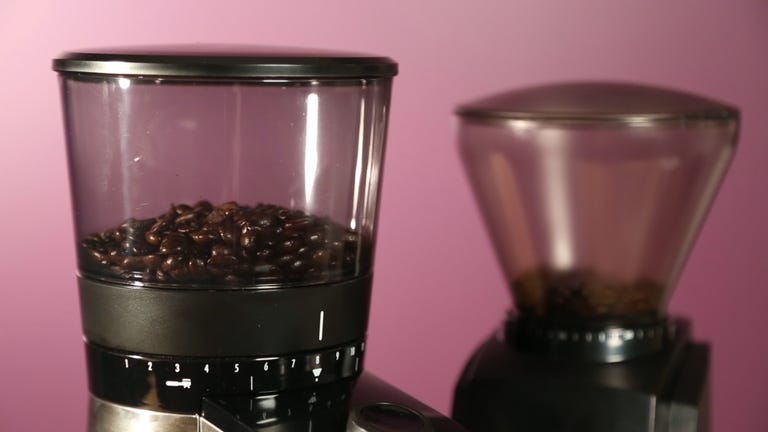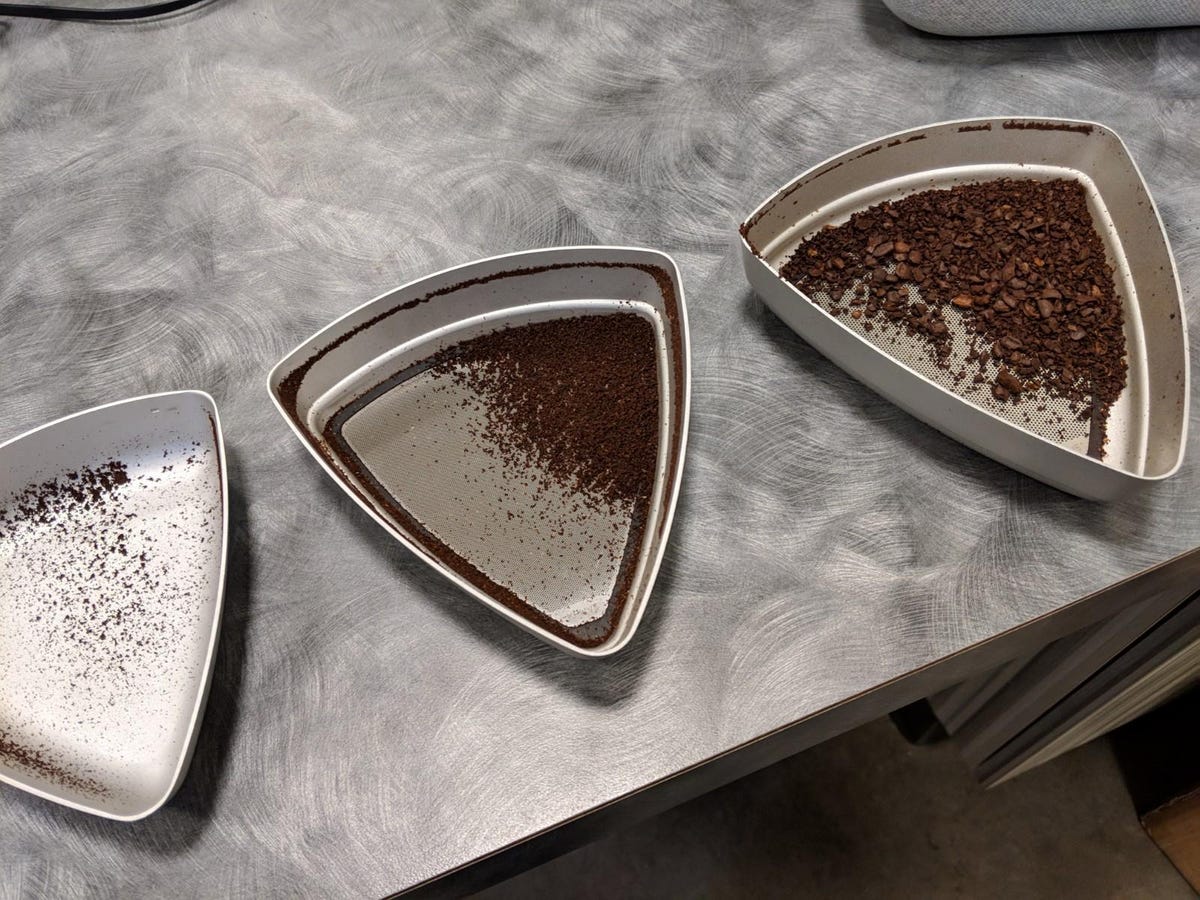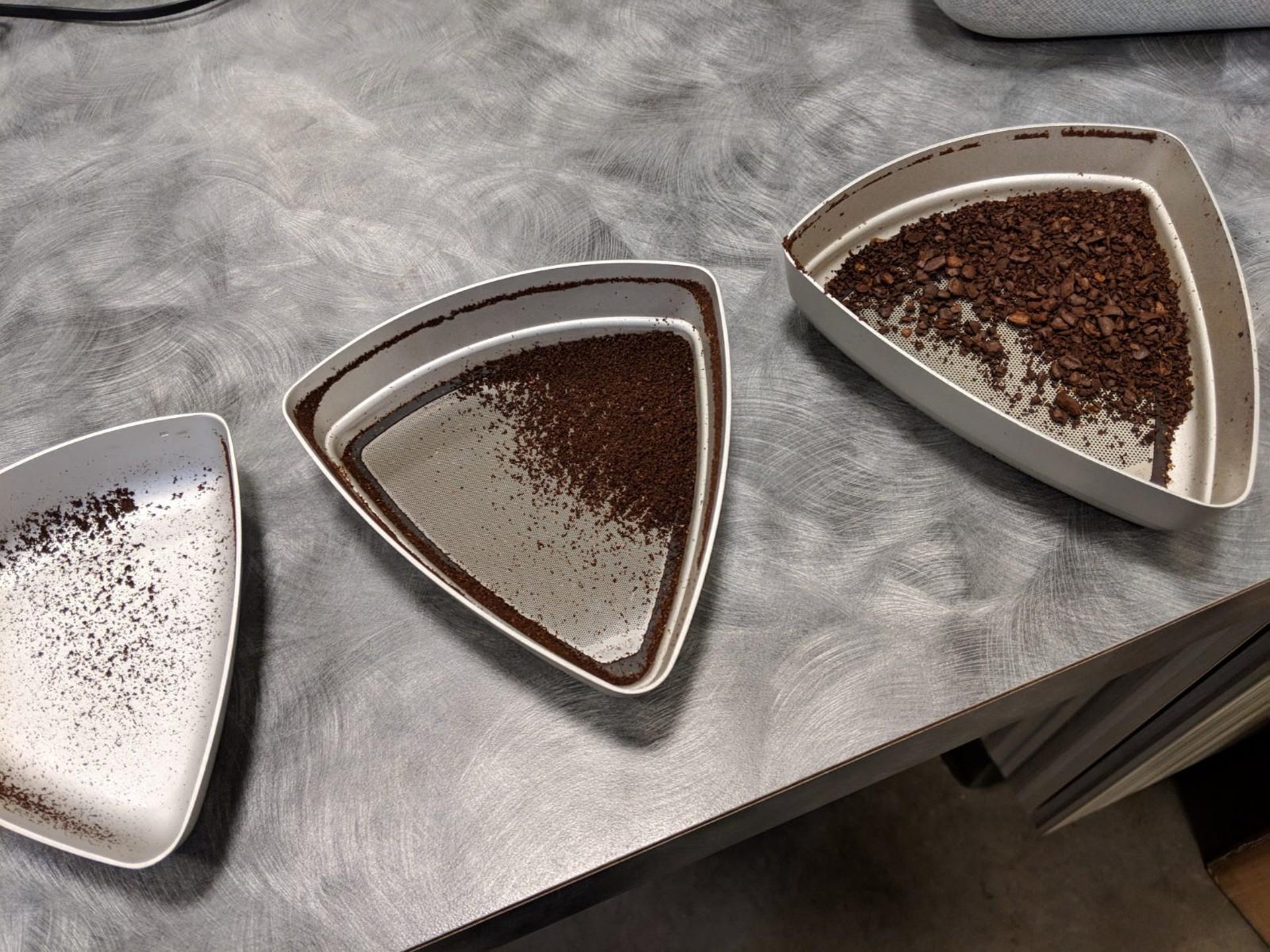An ideal coffee grinder produces ground particles that are of a consistent and correct size. By that, we mean that the size of ground coffee particles should match its grinder’s coarseness setting, fine or not. The size of grounds produced should also be fit for the intended brewing method, as outlined within the product manual.
To test each grinder for our coffee grinder reviews, we first hand-wash and dry all parts recommended by the manufacturer. We then set each machine to the appropriate level for grinding drip coffee or automatic coffee brewers (again, as indicated by the manual). Sometimes the manual lacks specific directions. In this case, we select the middle coarse setting for grinding coffee, then bump it up by one more coarse level (from fine grind, such as an espresso grind, to coarse grind). For example, if a grinder has 16 total coarse grind settings (assuming 16 is its most coarse grinding option and 1 is fine), we’ll set it for coarse level 9.

Watch this: Five things to know before buying a coffee grinder
01:59
Next we weigh out 10 grams of whole coffee beans to grind. By default our test beans are Kirkland Colombian roast. It’s the same beans we use for our coffee maker tests. (No judgments, please.) When you grind as much coffee and espresso as we do, it pays to be frugal.
Then we run our sample beans through the grinder. We also make note of how long the grinder takes to grind coffee beans. Next, we carefully collect the grounds, then sift them with a two-screen sieve for 60 seconds. For that we use the Kruve Sifter system. Our original Kruve Two unit came with two mesh screens of different aperture sizes (800 and 400 microns). This step lets us measure the grind size and grind consistency of our sample. The Kruve Base has now replaced the Kruve Two, and offers five mesh screens (300, 500, 800, 1,100, and 1,400 microns).

Enlarge Image

